High Quality Static Voltage Stabilizer Manufacturer
Home » Static Voltage Stabilizer Manufacturer
Types of AC Voltage Stabilizers
Static voltage stabilizer is a kind of high efficiency and energy saving voltage stabilizer, which adopts DSP technology and thyristor (thyristor) to control the voltage, without mechanical contacts and carbon brushes.
Product Advantages
Fast Response
Instantaneous response to voltage changes, providing very high accuracy of voltage regulation.
High efficiency and energy saving
low loss design, improve energy utilization efficiency, reduce operating costs.
Strong durability
no mechanical wear and tear, maintenance-free, long service life.
High adaptability
Suitable for harsh environments such as large fluctuations in the power grid and instantaneous sudden voltage changes.
Low noise operation
no mechanical friction, almost no noise during operation, suitable for quiet environment.
Anti-interference and purification
Anti-interference, strong purification ability, so that the output power is completely pure.
ZHENGXI's Static Voltage Stabilize Product
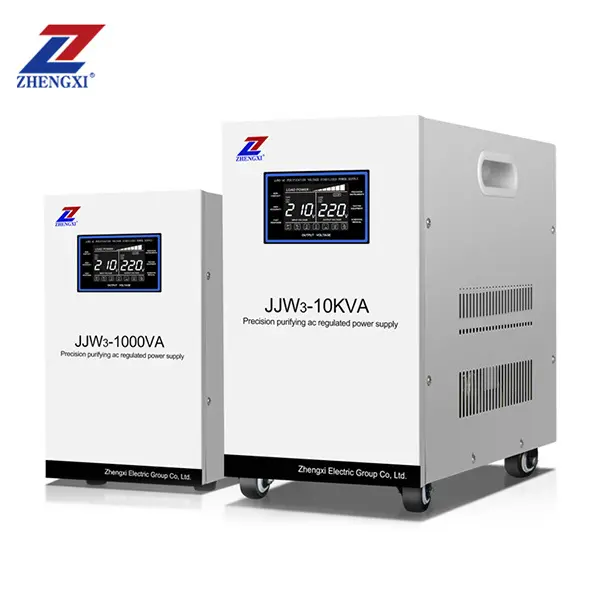
Intelligent Precision Purified 220V automatic voltage stabilizer
● Capacity: JJW-1KVA、2KVA、3KVA、5KVA、10KVA、15KVA、20KVA
● Input Voltage: single phase 170-265V; three phase: 304-456V or customized
● Output Voltage: single phase: 220VAC ± 1%; three phase: 380VAC ± 1% or customized
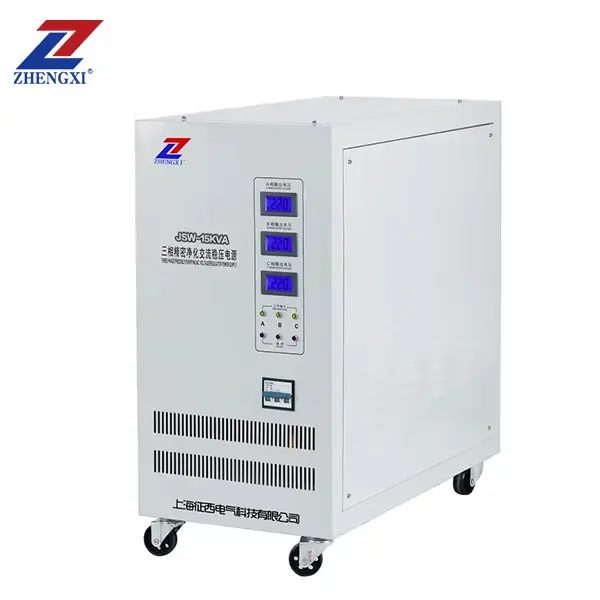
Precision AC static voltage stabilizer for laboratories use
● Capacity: 1.5KVA, 3KVA, 4.5KVA, 6KVA, 10KVA, 15KVA, 20KVA, 30KVA, 40KVA, 50KVA, 60KVA, 80KVA, 100KVA, 120KVA
● Input Voltage: 260V~450V, 260V~500V
● Output Voltage: single phase: 220V ; three phase: 380V or customized
● Voltage regulation accuracy: ±1%;

Three phase automatic voltage stabilizer for industrial use
● Capacity: ZBW 15 KVA~600KVA
● Input Voltage range: Three phase 304V-456V , for wider range can be customized
● Voltage regulation accuracy: ±(1-7)% selectable (± 2.5% high precision)
● Control Type: Thyristor Control
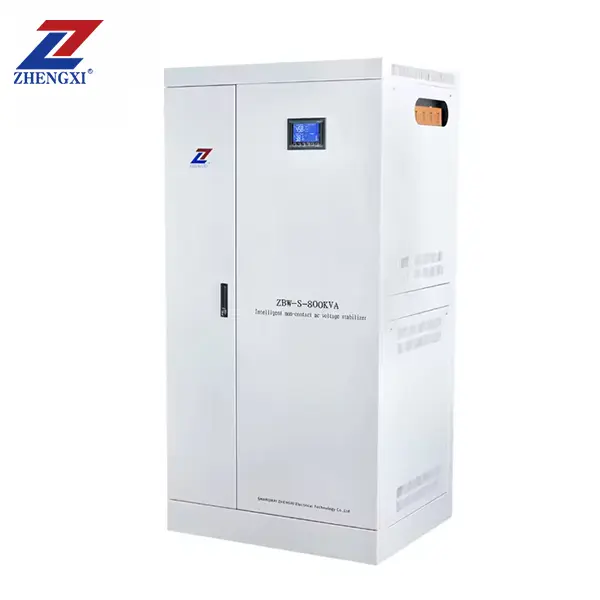
3 phase intelligent Static full automatic compensated voltage stabilizer
● Capacity: 15 KVA~800KVA
● Input Voltage range: Three phase 304V-456V , for wider range can be customized
● Voltage regulation accuracy: ±(1-7)% selectable (± 2.5% high precision)
● Response time: <10ms
● Stable schedule: ≤ 100ms
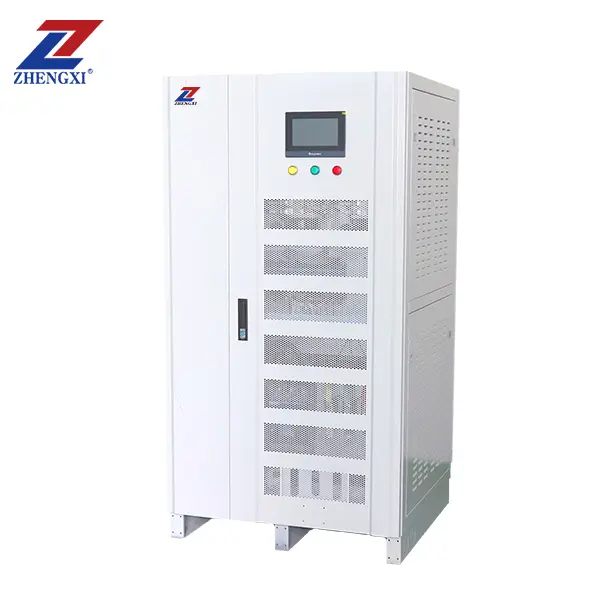
3 phase intelligent Static full automatic compensated voltage stabilizer
● 5.0 LCD digital dispaly
● Phase:3P+N+G or 3P+G option
● Capacity: 200-1200KVA
● Maintenance-free
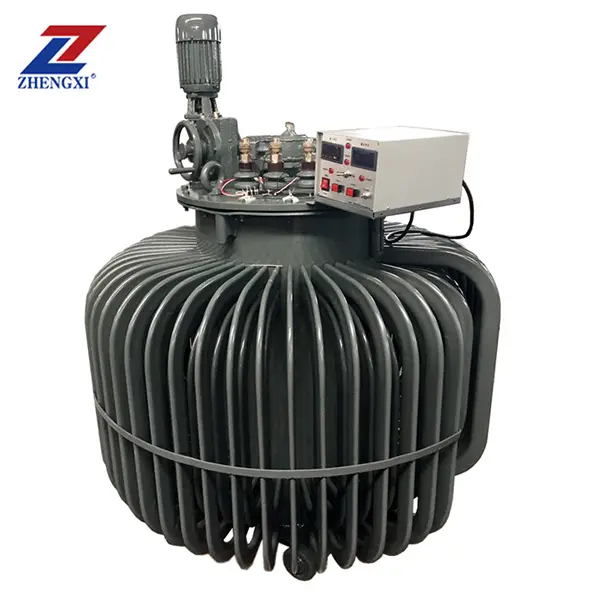
3 phase Oil-Immersed Stabilizer
● Capacity: 10KVA~3600KVA
● Input Voltage : 304V-456V
● Output voltage : 380V
● Accuracy within 380V ± (1~3%), free to be set
● For industrial use
For more information on our ZHENGXI voltage regulators or other series, please view the product list below or download our product brochure:
What is a Static Voltage Stabilizer?
A static voltage stabilizer is a device that stabilizes the voltage. The stabilized level of its outputting voltage is independent of whatever level changes in the voltage being applied to its inputs may be, or whichever type of load conditions can apply. Voltage regulation takes place with electronic circuits for instance thyristors or transistors, and has advantages in regard to response speed and dependability.
How Does a Static Voltage Regulator Work?
A static voltage regulator works in such a way that it continuously monitors the output voltage and sends manipulated control signals to its electronic components-thyristors. In somewhat simplified form, here is how this works:
Monitoring of Input Voltage: The device measures the input voltage and detects any deviations from the desired output voltage.
Control Circuit Activation: If the input voltage varies outside acceptable limits, the control circuit, therefore, acts and activates relevant components such as thyristors for voltage adjustment.
Voltage Adjustment: This activated component now works on the input voltage for either stepping up or stepping down the voltage that may be required for stability in output.
Feedback Loop: There is a continuous feedback mechanism that goes on monitoring the output voltage in real-time to make alterations so that the voltage may remain within its limits.
This provides the facility of a constant voltage output from the static voltage regulators, thereby enhancing performance and increasing the life of the connected equipment.
Difference Between Static and Dynamic Stabilizers
Operating Principle:
Static Stabilizers: These use electronic components to control the voltage without moving parts. They have a fast response against voltage changes.
Dynamic Stabilizers: Most of them have mechanical parts, such as rotating machines, like a flywheel or synchronous machines, to stabilize the voltage. They will have a sluggish response due to their inertia.
Response Time:
Static Stabilizers: They operate with immediate voltage correction.
Dynamic Stabilizers: They respond slowly because of the mechanical sections.
Maintenance:
Static Stabilizers: These require less maintenance since there are no moving parts inside.
Dynamic Stabilizers: Require more maintenance due to the mechanical parts inside.
Scopes:
Static Stabilizers: Applied in very sensitive pieces of electronic equipment because their operations have a demand for quick voltage correction.
Dynamic Stabilizers: They can be applied in heavy industrial loads where higher voltage fluctuations are involved.
Get help from voltage stabilizer experts
Compare prices and services, we have a team of technical professionals who will be happy to help you!

